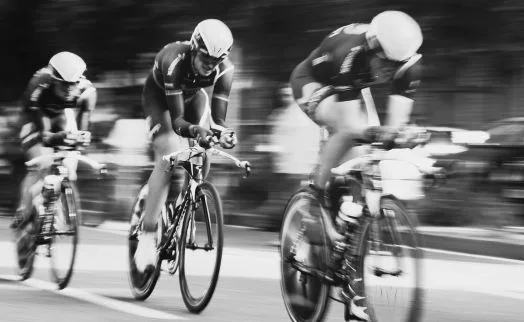Ever wonder just how fast can you go on a bicycle? Well it turns out we’ve uncovered some detail on some of the fastest cycling feats ever. We’ve also benchmarked the typical speeds you can expect vs. the pros. IMPORTANT NOTE, please do not attempt speed records on your bicycle unless in a controlled and safe environment. I learned this the hard way in trying to obtain a Strava segment record last year when I nearly collided with a car. No amount of accolades is worth serious injury and we are presenting this article as a curiosity piece. Please rest assured that any speed records were set with a lot of preparation and safety in mind.

Rompelberg and Mueller-Korenek– Speed Demons
One of the most iconic moments in the history of cycling was achieved by Dutch cyclist Fred Rompelberg in 1995. Riding in a specially designed dragster on the Bonneville Salt Flats in Utah, Rompelberg set the world speed record for cycling at an astonishing 167.044 miles per hour (268.831 km/h). This feat required not only a highly skilled and experienced cyclist but also meticulous planning, aerodynamic design, and favorable weather conditions.
Denise Mueller-Korenek went even further with a similar attempt to Rompelberg in 2018 and surpassed his speed at a blistering 183.9 MPH (296 km/h), the fastest speed to date. Her ride occurred in the same locale in Utah as Rompelberg and she has been appropriately dubbed “the fastest cyclist on earth”. She is also the first woman to ever hold such a speed record. Born into a cycling family (her father was a prominent distance cyclist), she seemed destined for two wheel greatness. As of 2023 her record still stands as the fastest of all time.
To reach such incredible speeds, cyclists need specialized equipment and a supportive environment. Aerodynamics play a crucial role, with streamlined bicycles designed to minimize air resistance (aerodynamics play a huge role in the most competitive races). Riders often adopt a low, tucked position to further reduce “drag” (put simply, the effect of wind slowing you down). In both Rompelberg and Mueller-Korenek’s cases, a motorized dragster provided a slipstream that significantly reduced wind resistance, allowing them to achieve unprecedented speeds. These speeds would not have been possible riding solo with no support.

What Speeds Are Realistic?
While the pursuit of extreme speed has seen success in specialized events like Rompelberg’s record attempt, competitive cycling events such as the Tour de France also showcase some pretty remarkable figures. The average speed of a novice, non competitive rider might range from 12 to 16 miles per hour (19 to 26 km/h) which is likely to answer how fast can you go on a bicycle. In contrast, professional cyclists competing in the Tour de France often maintain average speeds well above 25 miles per hour (40 km/h) throughout the race.
The difference in speeds between novice riders and Tour de France participants underscores the impact of training, technique, and equipment. Professional cyclists train rigorously to develop the strength and endurance needed to sustain high speeds over long distances. Additionally, their bikes are meticulously engineered for performance, featuring lightweight materials and aerodynamic designs and often costing thousands of dollars at least.
Conclusion
Cycling speed records will no doubt continue to be pushed as technology advances and athletes strive for new achievements, but the answer to how fast can you go on a bicycle is determined by your fitness and equipment. The synergy between human capability and cutting-edge equipment has propelled cycling into realms once thought impossible. Will we reach a plateau riding two wheels on our own power? The likelihood is that records will increasingly be beat with smaller margins, but the march towards greater human progress will no doubt continue.


